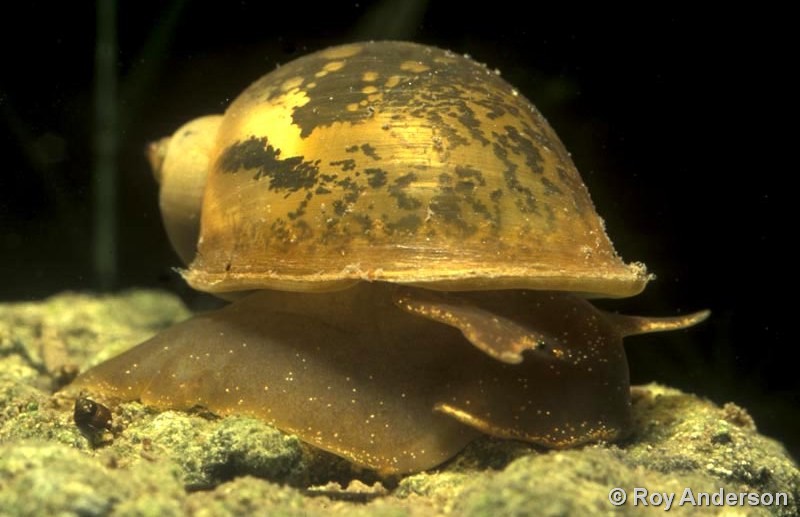隱蔽偽裝或是防曬優先?從淡水螺螺殼斑紋的可塑性的角度出發
 |
| Radix balthica photo: Mollusca of Belarus |
摘要
By having phenotypically plastic traits, many organisms optimize their fitness in response to fluctuating threats. Freshwater snails with translucent shells, e.g. snails from the Radix genus, differ considerably in their mantle pigmentation patterns, with snails from the same water body ranging from being completely dark pigmented to having only a few dark patterns. These pigmentation differences have previously been suggested to be genetically fixed, but we propose that this polymorphism is owing to phenotypic plasticity in response to a fluctuating environment. Hence, we here aimed to assess whether common stressors, including ultraviolet radiation (UVR) and predation, induce a plastic response in mantle pigmentation patterns of Radix balthica.We show, in contrast to previous studies, that snails are plastic in their expression of mantle pigmentation in response to changes in UVR and predator threats, i.e. differences among populations are not genetically fixed. When exposed to cues from visually hunting fish, R. balthica increased the pro- portion of their dark pigmentation, suggesting a crypsis strategy. Snails increased their pigmentation even further in response to UVR, but this also led to a reduction in pattern complexity. Furthermore, when exposed to UVR and fish simultaneously, snails responded in the same way as in the UVR treatment, suggesting a trade-off between photoprotection and crypsis.
對於一個生物個體來說,牠能呈現出的體色來自很多不同方面的限制,遺傳框限多樣性,性擇決定這性狀是否受青睞,天擇直接讓不適合的個體從世界上說再見,還要考慮是不是能適應環境。面對這複雜的世界,不同區域的族群,甚至個體,受到的壓力可能不同,因此生物的顏色出現差異,造就物種體色多態性(polymorphism) 的生成。這又觸動科學家們那條求知旺盛的神經:究竟這些生物是受到什麼因素,讓不同顏色個體的適存度有差異?
蘿蔔螺屬(Radix,椎實螺科 Lymnaeidae)是個淡水螺,其螺殼基本上是褐色,帶有黑色的斑紋,有些種類不同族群的黑色斑紋比例會有差異,之前的研究認為這個差異來自遺傳限制,就是因為A族群黑的少生下來也黑的少,B族群黑的多生下來也黑的多。但本篇的作者群似乎不這麼認為。面對波動的環境,遺傳的限制可能只是淘汰的結果而不是原因,因此作者群透過本篇的主角R. balthica,來討論這樣的顏色差異是為了隱蔽起來躲避天敵,或是為了抵抗不利環境因子。
 |
| Fig. 1 螺殼在不同因子下的變化 |
 |
| 實驗中使用的捕食者黑鯽魚 (Carassius carassius) photo: 黑鯽 (wiki) |
 |
| Fig. 2 上圖說明黑色區域的比例,下圖為色素覆蓋的複雜度 |





0 comments